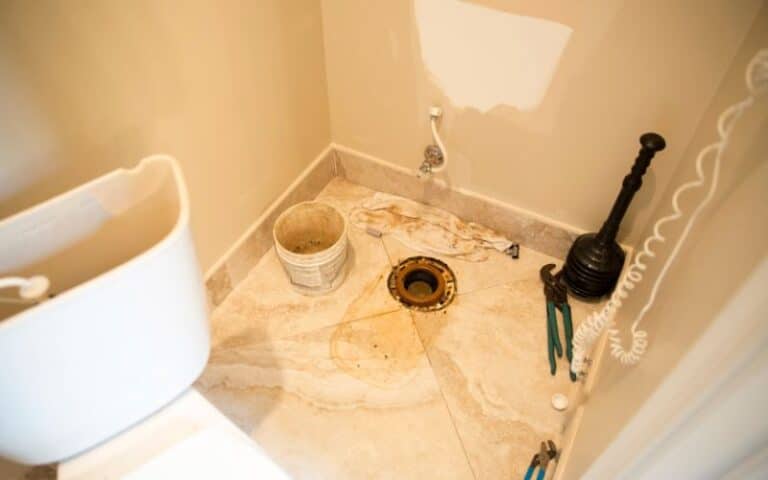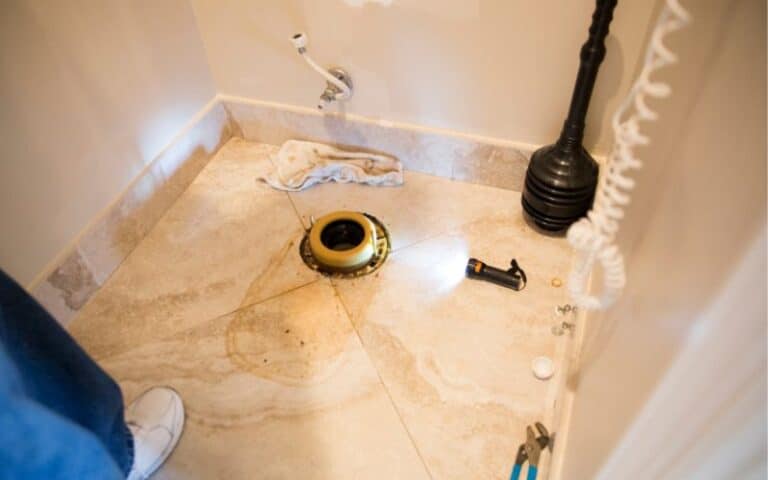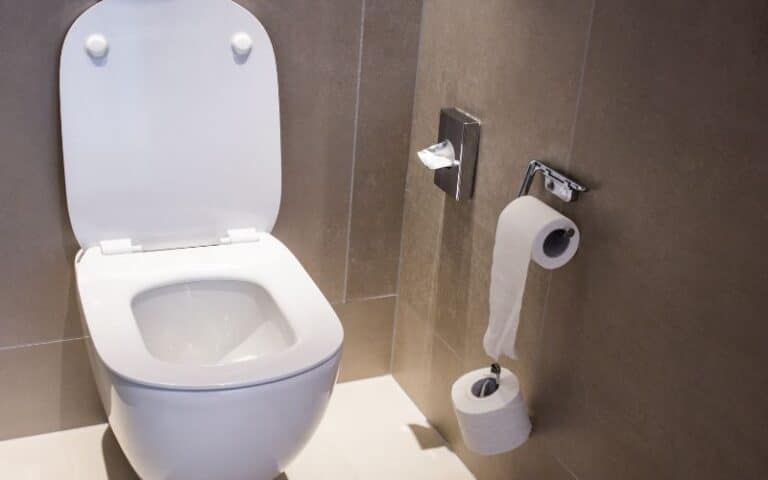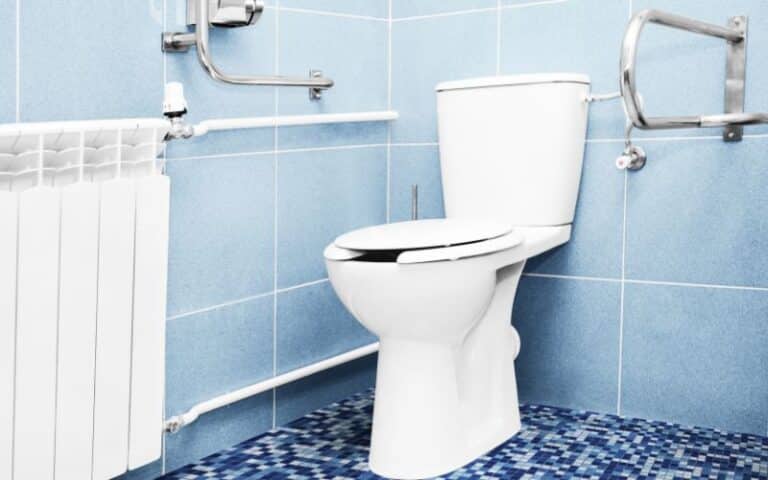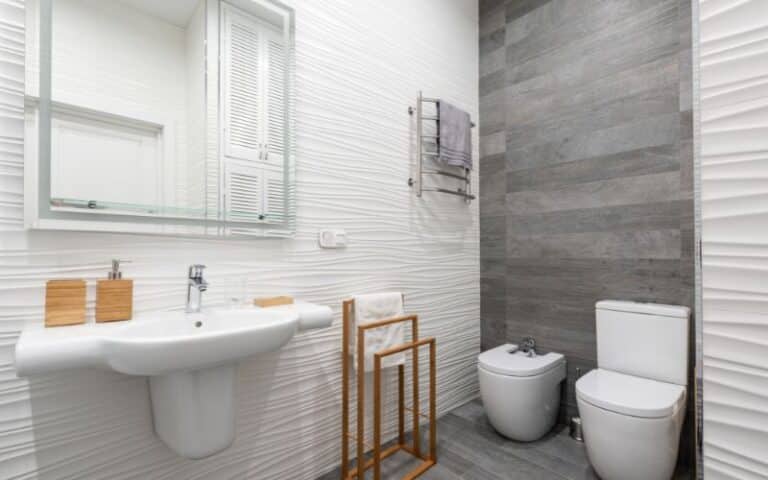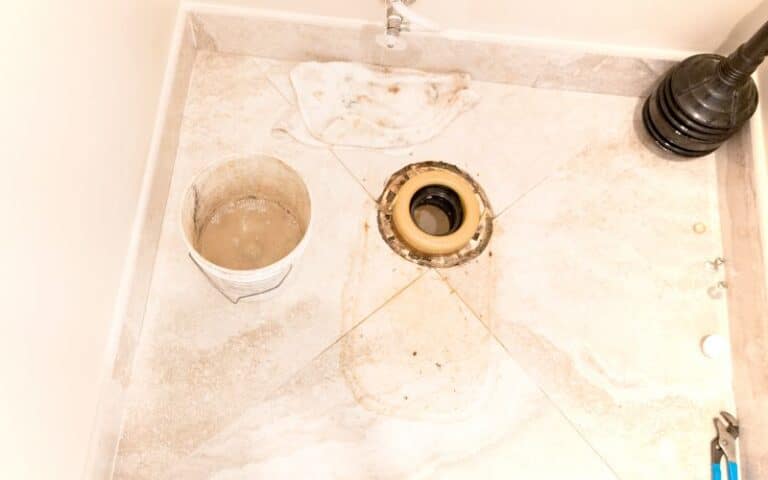The toilet is an important part of the house. You do not want to have plumbing difficulties in the toilet. Aside from being worrisome, these difficulties can cause a lot of damage.
The two major toilet components are the tank at the top and the bowl at the bottom; when any of these components become faulty, it can get uncomfortable.
Common faults in the bowl include a loosely fitting bowl that spins sideways when you sit on it.
The toilet flange bolts can spin on their hinges. When they spin, the commonest causes could be moisture and rust, accumulation of dirt and debris, and improper fitting. It is common for older flange bolts to spin on a toilet bowl. Fortunately, you can stop this spinning by simply replacing the bolts or tightening them accurately.
As you read through this article, you will discover why the bolt of your toilet flange spins. Furthermore, I will tell you how tight toilet flange bolts should be.
At the end of this article, you’ll learn what happens when you overtighten a toilet flange bolt on its hinges.
Why Is the Toilet Flange Bolt Spinning: 3 Common Reasons
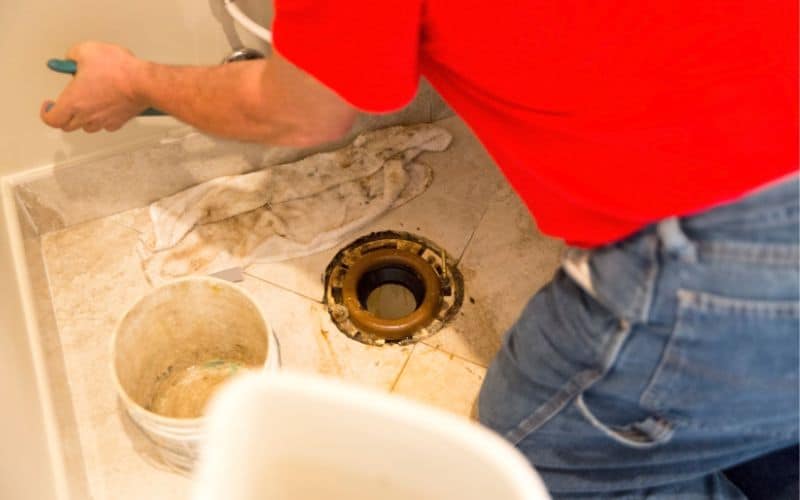
The toilet flange bolt will spin for several reasons. Some common reasons include moisture and debris around the holes, rusted bolts, and smaller holes.
The toilet flange is a unit that holds the toilet bowl to the ground. Beyond a hold, the toilet flange connects the bowl to the ground.
In other words, the toilet flange connects the drainage system to the toilet drain. Plumbers might call the flange several other names. Don’t get confused!
You might hear names like closet flange. They mean the same thing. These materials are made from copper, brass, or steel.
Toilet flanges come in different sizes, so it would be best to identify the best size for your toilet seat. The toilet flange is fastened to the ground by bolts.
These bolts, in turn, fasten the toilet seat to the flange. To achieve stability, these bolts must be in place at all times.
Now that you know what a toilet flange is, here are the most common reasons the bolts keep spinning.
#1. Moisture And Debris Around the Holes
When moisture and debris form around the holes, the toilet flange bolt will begin to spin. When it spins, the toilet seat also spins on its hinges.
The toilet flange unit consists of a flat washer that you place on the floor. This washer has holes that can admit bolts through them to the ground.
You can drive these bolts through washer plates into the ground and fasten the toilet seats on these bolts.
The tightness of the bolts determines the strength of the hold. When moisture and debris accumulate around the bolts, it prevents them from screwing up properly.
The moisture and debris lodge them in the holes to increase the resistance between the bolt and the washer.
Moisture occupies the space and increases the rust in the screws. When you attempt to drive in the bolts, they fail to fasten accurately because of the debris in and around the washer.
#2. Rusted Bolts
When the bolts rust, the toilet bolt flange will spin from side to side. Rusts generally spoil every material made of metal.
Any material made of metal is susceptible to rust when exposed to moisture. In some metals, even humidity can trigger rust.
When rust forms, the iron atoms in the material react with oxygen molecules in the water to form iron oxide.
In the case of humidity, the metal reacts with oxygen in the air to become rusty. The process is extremely slow.
Rusting causes iron to become flaky and weak. The bolts in the toilet flange are not left out. They become very weak and lose their strength.
When these bolts become rusty, they lose their strength and cannot hold the flange and the toilet seat. This phenomenon makes the bowl spin from side to side.
#3. Smaller Holes
When you drill small holes in the floor, the toilet flange bolt may spin from side to side. This anomaly is because the bolts can no longer fit into the flange.
The bolts struggle to fit in when small holes are drilled on the ground. The toilet seat continues to spin from side to side because the bolts are not properly fastened to the ground.
In the long run, the bolts will continue to furrow through the ground, leaving a large hole afterward.
When you install a toilet flange with small holes, the problem will never go away. This persistence is because the bolts can never get a perfect size alone.
Initially, the holes may be too small, and the toilet seat may spin side by side.
As this problem persists, the spinning effect of the toilet seats makes the bolts furrow through the ground to create an oversized hole.
How To Fix a Spinning Toilet Flange Bolt (A Step-by-Step Guide)
Several reasons could cause your toilet flange bolt to spin from side to side. When these problems arise, the solution might be very simple.
You need to fix these problems immediately after you notice them. If you allow the problems to linger, they might result in more serious damage.
Here is a step-by-step guide on fixing a spinning toilet flange bolt:
#1. Remove Old Bolts
The first step when fixing the spin in a toilet flange bolt is to remove all old bolts. Depending on the cause of the problem, the technique needed to remove the bolt may vary.
If you have rusty bolts, this process may be difficult to manage. Rusty bolts have weakened and may not respond accurately to the wrench or plier.
In this case, you might need some maneuvers to get them out. The commonest means of getting rusty bolts out is by lubrication.
You can lubricate the surface of the bolt by applying a lubricating spray. Lubricating sprays penetrate the bolts and reduce the resistance to screws.
If applying a lubricant does not work, you can apply some heat to the bolt. The heat should be low or moderate.
When you apply low or moderate heat, the bolts expand slightly to allow the wrench or pliers to loosen them.
Once you get the bolts out, inspect them carefully to be sure they are rusty. You can go ahead and remove the flange afterward.
If the bolt is not rusty, you might find it easy to remove the bolt. Once you have removed the bolt, you can remove the toilet flange, too.
The whole idea of removing the bolt enables you to view the toilet flange and remove it afterward.
#2. Inspect The Hole
Once you have safely removed the toilet flange, inspect the hole once you have taken off the toilet flange.
When you inspect the hole, look out for the size of the hole and the presence or absence of dirt and debris. Also, look out for moisture in the holes.
When you look out for the size, you need to ensure the holes’ size is the same as those of the bolts.
When the sizes are too small, the toilet flange begins to spin from side to side. This feature is because the bolt does not fit into the ground.
When the sizes of the holes are larger than the sizes of the bolt, they spin from side to side, too. You must inspect the holes’ size after removing the flange.
Aside from the size of the holes, look out for the content of the holes. When you inspect the content of the hole, you look out for debris and moisture.
Debris and moisture prevent the bolts from fastening tightly into the holes. Quickly clean the holes by blowing the debris out or cleaning the moisture with a cloth.
#3. Drill The Hole
If you observe that the holes are too small for the bolts to fit in, you should drill a hole that will befit the size of the bolt.
If the sizes of the holes are too large, then you will need to drill fresh holes to accommodate the size of the bolt.
#4. Re-install Cleaned or New Bolts
You can now replace all the parts you initially removed. Return these parts carefully to have a neat job done.
If the bolts are rusty, you should clean the old ones and ensure that all the rusts that initially coated the bolts.
In many other cases, you might need to change the bolts. When you bring new bolts, you have to drill new holes.
The table below summarizes how to fix a spinning toilet flange based on the cause.
| Causes of a Flange Bolt | How to fix them |
|---|---|
| Moisture and debris around the holes | Remove debris and moisture |
| Rusted bolts | Remove and replace bolts. |
| Smaller holes | Drill new holes. |
How Tight Should Your Toilet Flange Bolt Be?
Your toilet flange bolt should be tight enough to hold your toilet seat in lace without letting it spin.
This level is the ideal tightness that the toilet flange bolt should have. It should not be too tight to break the seat.
When you fasten the bolts loosely, the toilet flange begins to spin. When it begins to spin, the toilet seat may get damaged.
When you fasten the bolts too tightly, the seats may break due to the increased tension on the base of the seat.
What Makes Toilet Bolts Loose Over Time?
You might have a properly tightened bolt, but these bolts may loosen over time. Some commonest causes include a rusty bolt, moisture and debris in the hole, and a small hole.
Rusting is a slow process; it does not happen at once. This process makes toilet bolts loosen over time.
In the case of moisture and debris, they accumulate slowly. These problems also cause toilet bolts to loosen over time.
What Happens When You Overtighten a Toilet Flange Bolt?
You might break the toilet seat when the toilet flange bolt is overtightened. When you overtighten a toilet flange bolt, the tension on the base increases.
When this tension increases, the base of the toilet seat may break. You may notice water leaking from the base of the toilet.
When you notice water leaking out of the base, it is most likely that the base has broken. This break could be because you have the bolt too tight.

